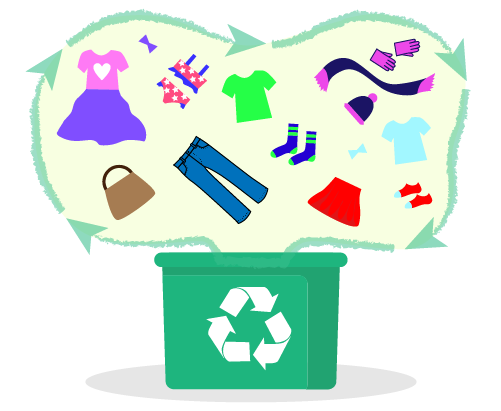Our clothing fashions reflect our cultural, social, and individual identities. Clothes are a fun way to express who we are to the world. From colorful to dark, relaxing to formal, clothing fashions can speak volumes about the way we feel and want to present ourselves. But popular fast fashion comes at a cost to more than our wallets.
Clothes are becoming cheaper than ever to produce, so many people don’t value them as much as they once did. This means a lot of clothes are being made and discarded more often, which is bad for the environment. Some rivers have been polluted with harmful chemicals because of clothing factories. Every time we wash our clothes, tiny pieces of plastic go into our water systems, and then into our food.
One way to avoid these problems is called slow fashion. Slow fashion includes several ideas. For example, greener brands are focusing on quality materials, not the quantity they make. They consider the environment when they make their products. This helps customers shop with peace of mind.
Look at the clothes you already have. Another idea behind slow fashion is to wear everything you’ve got without changing your style every month. Can you create new outfits with old items? Can you add accessories to transform your look? Are you able to repair clothes that have tears and holes?
When you feel a need to shop, ask yourself why you want to go shopping. Is it connected to how you’re feeling rather than actually needing new clothes? Companies tell us that buying new things makes us feel better, but does it really? Consider other things that make you happy, such as listening to music or spending time with friends and family instead.
Another way to stop the demand for new items is to go vintage, or second-hand. In other words, recycle the clothes that are already out there. Most second-hand shops sell outfits in good condition and in different sizes. Many also give some of the money they make to charities, so you’re helping in several ways.
In sum, be curious and careful when buying new clothes. Wear everything you have in your closet, and reuse wherever you can.
